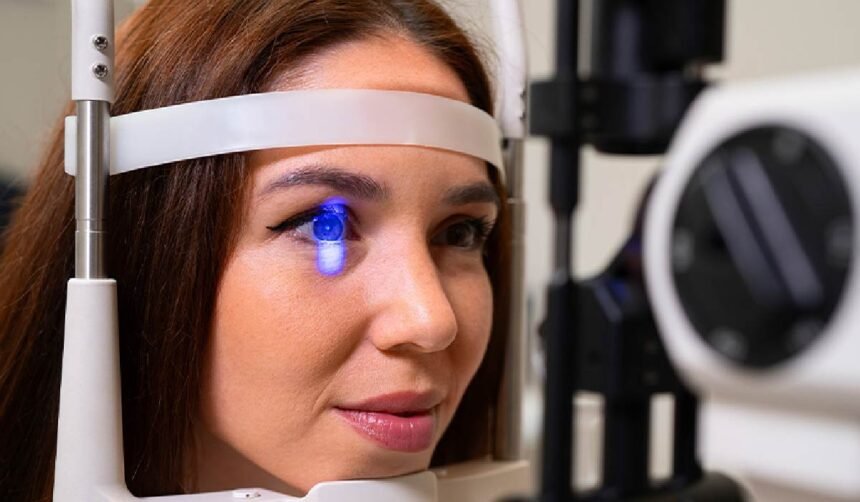As we age, our vision often becomes clouded by refractive errors such as presbyopia, myopia, hyperopia, and astigmatism. While many people rely on glasses or contact lenses to correct these issues, Refractive Lens Exchange (RLE) offers a more permanent and comprehensive solution. In London, renowned for its cutting-edge medical facilities and expert surgeons, Refractive Lens Exchange london provides patients with the chance to regain crystal-clear vision and reduce or eliminate the need for corrective eyewear.
What Is Refractive Lens Exchange (RLE)?
Refractive Lens Exchange is a surgical procedure that involves replacing the natural lens of the eye with a synthetic intraocular lens (IOL) to correct various refractive vision problems. It is similar to cataract surgery but is typically performed for those with no cataracts yet, making it an ideal solution for people who are struggling with presbyopia or high refractive errors.
Unlike laser eye surgery, which reshapes the cornea to change the way light enters the eye, RLE addresses the issue directly by replacing the eye’s lens itself. The new IOL is specifically chosen to meet the patient’s visual needs, ensuring clear vision at various distances.
Why Choose Refractive Lens Exchange in London?
There are several reasons why Refractive Lens Exchange in London has become a preferred treatment for many patients:
1. Leading Surgeons in the Field
London is home to some of the best ophthalmic surgeons in the world, many of whom specialise in complex vision correction procedures like RLE. With years of experience and thousands of successful surgeries behind them, these experts provide patients with a high level of care and precision, ensuring the best possible results.
2. Advanced Technology
London clinics use state-of-the-art technology to perform Refractive Lens Exchange surgeries. From femtosecond lasers for precision incisions to 3D corneal mapping for personalised IOL selection, London offers some of the most advanced tools available to eye surgeons. These technologies help minimise risks and improve the accuracy of the surgery.
3. Customised Treatment Plans
One of the key benefits of undergoing RLE in London is the level of personalised care. During your initial consultation, your eye health, lifestyle, and visual goals will be taken into account to create a treatment plan that’s tailor-made for you. With a variety of IOLs available, your surgeon will recommend the best lens for your vision needs, whether you require multifocal lenses for distance and near vision, toric lenses to correct astigmatism, or other advanced options.
4. Fast and Efficient Process
In contrast to the NHS, where patients may experience long wait times, private clinics in London offer quicker appointments and streamlined processes. From your initial consultation to post-operative care, everything is designed for efficiency. Many clinics can schedule surgery within a short time frame, often allowing patients to undergo the procedure in a matter of weeks rather than months.
5. Comprehensive Aftercare
Refractive Lens Exchange surgery requires careful aftercare to ensure optimal recovery. London’s top clinics provide thorough follow-up care, including regular check-ups to monitor healing, as well as access to 24/7 helplines should any issues arise. This ongoing support ensures that you achieve the best possible visual outcome.
Who Can Benefit from Refractive Lens Exchange?
Refractive Lens Exchange is ideal for individuals who:
- Are over 45 years of age and experience presbyopia (difficulty focusing on close objects)
- Have high refractive errors (severe myopia or hyperopia)
- Are not candidates for laser eye surgery due to thin corneas or other factors
- Want to reduce or eliminate their dependence on glasses or contact lenses
RLE is particularly beneficial for those looking for a long-term solution to vision problems, as it not only corrects refractive errors but also prevents the development of cataracts in the future, since the natural lens is removed.
What Does the RLE Procedure Involve?
1. Consultation and Assessment
Before undergoing RLE, you’ll have a thorough eye exam to assess the health of your eyes and determine your suitability for the surgery. This includes measuring your cornea’s thickness and curvature, checking for other eye conditions, and discussing your lifestyle needs. Based on this information, your surgeon will recommend the most appropriate type of IOL for you.
2. The Surgery
The procedure is minimally invasive and typically performed under local anaesthetic. It is usually completed within 15 to 20 minutes per eye. The natural lens is gently removed using advanced ultrasound or laser techniques, and a custom IOL is implanted into the eye. The procedure doesn’t require stitches, and the incision is tiny, allowing for faster recovery.
3. Recovery
Most patients notice significant improvement in their vision within 24 to 48 hours. While the recovery process is relatively quick, full healing typically takes 1 to 2 weeks. Patients are advised to avoid strenuous activities, follow prescribed eye care instructions, and attend post-operative check-ups to ensure everything is progressing smoothly.
Risks and Complications
Although Refractive Lens Exchange is a safe procedure, it does come with some potential risks, as with any surgery. These may include:
- Dry eyes: This can occur due to temporary changes in the tear film after surgery.
- Infection: Although rare, there is a risk of infection that could affect the healing process.
- Glare or halos: Some patients experience halos or glare around lights, particularly at night, especially with multifocal lenses.
- Need for further correction: In some cases, additional surgery may be required to fine-tune the results.
Choosing an experienced surgeon and a well-established clinic in London can significantly reduce these risks and improve your surgical outcomes.
The Cost of Refractive Lens Exchange in London
The cost of Refractive Lens Exchange in London varies based on factors like the type of IOL chosen and the clinic’s reputation. On average, the procedure can range from £2,500 to £4,500 per eye. Many private clinics offer payment plans and financing options, making it easier to afford.
Although the procedure is not typically available on the NHS unless you have cataracts, private surgery in London provides access to premium lenses and a faster, more personalised experience.
Refractive Lens Exchange vs. Laser Eye Surgery
While both Refractive Lens Exchange (RLE) and laser eye surgery correct refractive vision problems, RLE is better suited for individuals over 45 or those with severe vision issues. Laser eye surgery reshapes the cornea, while RLE replaces the natural lens of the eye. For those with presbyopia or high myopia, RLE is often the better choice.
Here’s a quick comparison:
| Feature | RLE (Refractive Lens Exchange) | Laser Eye Surgery (LASIK, SMILE, etc.) |
| Best for age group | 45+ | 18–45 |
| Treats presbyopia? | Yes | Limited |
| Treats severe refractive errors? | Yes | No |
| Prevents cataracts? | Yes | No |
| Recovery time | 1–2 weeks | 2–7 days |
Final Thoughts
Refractive Lens Exchange London provides a premium solution for individuals looking to achieve clear, natural vision without the need for glasses or contacts. Whether you’re struggling with presbyopia, severe refractive errors, or simply want a long-term vision correction option, RLE can offer you the freedom to see life with clarity.
Book a consultation with a top London clinic today and take the first step toward a future without glasses.









